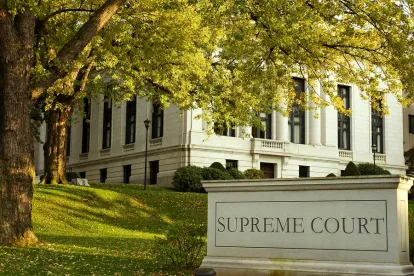A key building block of U.S. government is how administrative agencies interpret their own regulations. Because this question is so fundamental to the entire regulated community, we have blogged about administrative deference generally and the Kisor case specifically. The Supreme Court affirmed the long-standing judicial tenet of administrative deference to agencies’ interpretation of their own regulations this week. In doing so, however, the majority cautioned against a laissez faire application of deference, emphasizing that courts must carefully and explicitly consider the specific criteria established under Auer v. Robbins before deferring to an agency’s interpretation of its own regulation.
The Supreme Court considered a fundamental question in Kisor – namely the issue of whether the Court should overrule Auer v. Robbins and Bowles v. Seminole Rock & Sand Co. – the two seminal cases establishing the Court’s current position on administrative deference. That question cuts to the heart of the issue of deference and administrative law itself. Overruling one or both of these decisions could have resulted in courts deferring to agencies’ interpretations of their own regulations considerably less frequently.
In the end, the Supreme Court in Kisor refused to overturn Seminole Rock/Auer, forgoing a big-picture reconsideration of deference. At least for the time being. Five of the nine Supreme Court justices ruled that Seminole Rock/Auer deference is inappropriate if the reviewing court finds that the agency’s interpretation is unreasonable, after applying all the traditional tools of statutory construction. That is, a court will not defer to an agency’s interpretation if it is not within the range of reasonable readings left open by a genuine ambiguity in the regulation.
Though not overturning the marquee decisions, the majority emphasized the limits on Auer deference: a court should defer to an agency’s interpretation only if the interpretation (1) is an official position of the agency made in some formal context, though the majority concedes that an interpretation may still be given Auer deference even if it is not approved by an agency head, for example; (2) is consistent with prior formal interpretations of the agency; (3) rests on actual agency expertise and not merely a litigation position; and (4) was issued with fair notice to regulated entities. These limits on Auer deference could create an uphill battle for administrative agencies challenged to defend interpretations of certain policies and rules in the future.
And Kisor does not appear to conclusively end the administrative deference debate. In fact, four of the nine Supreme Court Justices favored an even broader ruling overturning Auer and Seminole Rock, which makes it likely that the Supreme Court could revisit administrative deference issues soon. Judge Gorsuch, for example, called the majority decision “more a stay of execution than a pardon” of the Auer doctrine and favored overturning it entirely. A fifth – Chief Justice John Roberts – indicated in a concurrence that he was willing to revisit so-called Chevron deference, which is deference relating to an agency’s construction of statutory law, in the future.




 />i
/>i
